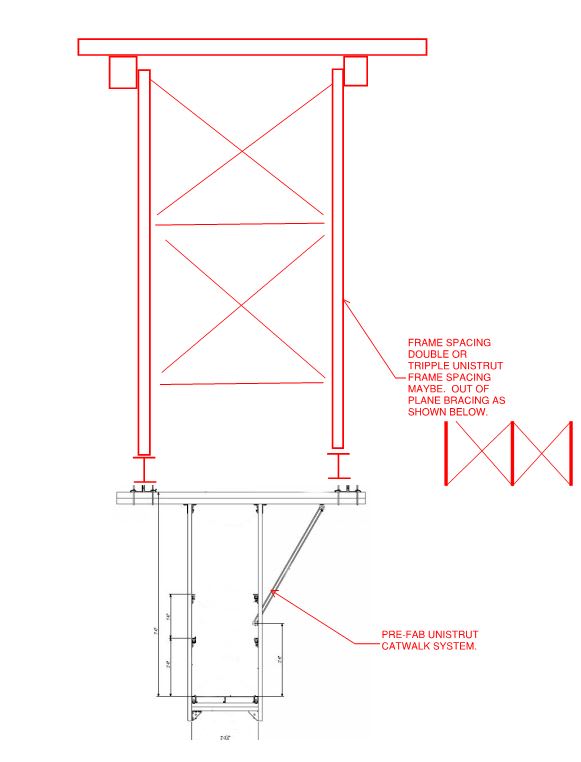I am working on trying to obtain information regarding supporting a catwalk from a reinforced concrete beam.
The concrete beams are 25 ft above the catwalk and the beams are spaced at 8'-6" c-c. In order to have the catwalk supports attached to the beams above them, the catwalk beam frames will span 8'-6" long.
I am interested in obtaining information about the type of members to be used to attached the catwalk to the RC beams above. I have some preliminary UNISTRUT documents/drawings about catwalk systems being supported by various structural elements (i.e. concrete slabs, steel beams, roof joist, etc.) above them.
Is anyone aware of any other methods to achieve this? Any other technical documents/guides?
Comments/suggestions are appreciated.
The concrete beams are 25 ft above the catwalk and the beams are spaced at 8'-6" c-c. In order to have the catwalk supports attached to the beams above them, the catwalk beam frames will span 8'-6" long.
I am interested in obtaining information about the type of members to be used to attached the catwalk to the RC beams above. I have some preliminary UNISTRUT documents/drawings about catwalk systems being supported by various structural elements (i.e. concrete slabs, steel beams, roof joist, etc.) above them.
Is anyone aware of any other methods to achieve this? Any other technical documents/guides?
Comments/suggestions are appreciated.


